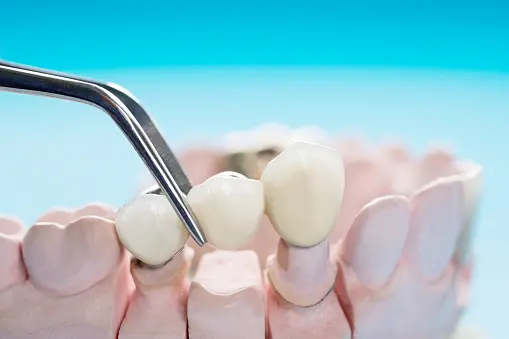- Home
- Medical news & Guidelines
- Anesthesiology
- Cardiology and CTVS
- Critical Care
- Dentistry
- Dermatology
- Diabetes and Endocrinology
- ENT
- Gastroenterology
- Medicine
- Nephrology
- Neurology
- Obstretics-Gynaecology
- Oncology
- Ophthalmology
- Orthopaedics
- Pediatrics-Neonatology
- Psychiatry
- Pulmonology
- Radiology
- Surgery
- Urology
- Laboratory Medicine
- Diet
- Nursing
- Paramedical
- Physiotherapy
- Health news
- Fact Check
- Bone Health Fact Check
- Brain Health Fact Check
- Cancer Related Fact Check
- Child Care Fact Check
- Dental and oral health fact check
- Diabetes and metabolic health fact check
- Diet and Nutrition Fact Check
- Eye and ENT Care Fact Check
- Fitness fact check
- Gut health fact check
- Heart health fact check
- Kidney health fact check
- Medical education fact check
- Men's health fact check
- Respiratory fact check
- Skin and hair care fact check
- Vaccine and Immunization fact check
- Women's health fact check
- AYUSH
- State News
- Andaman and Nicobar Islands
- Andhra Pradesh
- Arunachal Pradesh
- Assam
- Bihar
- Chandigarh
- Chattisgarh
- Dadra and Nagar Haveli
- Daman and Diu
- Delhi
- Goa
- Gujarat
- Haryana
- Himachal Pradesh
- Jammu & Kashmir
- Jharkhand
- Karnataka
- Kerala
- Ladakh
- Lakshadweep
- Madhya Pradesh
- Maharashtra
- Manipur
- Meghalaya
- Mizoram
- Nagaland
- Odisha
- Puducherry
- Punjab
- Rajasthan
- Sikkim
- Tamil Nadu
- Telangana
- Tripura
- Uttar Pradesh
- Uttrakhand
- West Bengal
- Medical Education
- Industry
Type of cement does not influence performance of zirconia crowns 48 months after clinical use: study

Type of cement does not affect the crowns 48 hours after clinical use, according to new research published in Operative Dentistry. Both cements- glass ionomer cement (GIC) (Meron, Voco) and self-adhesive resin cement (Bifix-SE, Voco) used in study resulted in adequate retention rates, aesthetic and functional outcomes, and biological response.
This split-mouth clinical study investigated the effect of luting cement on the performance of veneered yttrium-stabilized tetragonal zirconia polycrystal (Y-TZP) zirconia crowns.
A total of 60 crowns prepared with Y-TZP coping and press-on porcelain were made with a split-mouth design in 30 participants. The crowns were cemented either with glass ionomer cement (GIC) (Meron, Voco) or with self-adhesive resin cement (Bifix-SE, Voco). The restorations were assessed immediately after treatment and after 6, 12, 24, 36, and 48 months using the modified United States Public Health Service criteria. The parameters analyzed were retention, color stability, marginal discoloration, marginal adaptation, surface roughness, anatomic form, and secondary caries. The differences between the groups were analyzed by the Fisher exact test in each period of evaluation. The survival rate was analyzed with the Kaplan–Meier and log-rank test (α=0.05).
The Results of the study are as follows:
After 48 months, 20 participants attended the recall. During the period of evaluation, 1 crown cemented with glass ionomer cement and 1 crown cemented with resin cement lost retention. Color match, marginal discoloration and adaptation, surface roughness, and anatomic form did not change in any of the periods evaluated, and no secondary caries was observed. No significant differences were found between the 2 luting cements for any of the clinical parameters analyzed, nor for the survival rates during the study.
Thus, the researchers concluded that the type of cement did not influence the performance of the crowns after 48 months of clinical use. Both cements resulted in adequate retention rates, aesthetic and functional outcomes, and biological response.
Reference:
Glass Ionomer Versus Self-adhesive Cement and the Clinical Performance of Zirconia Coping/Press-on Porcelain Crowns by CRG Torres et al. published in the Operative Dentistry.
Dr. Shravani Dali has completed her BDS from Pravara institute of medical sciences, loni. Following which she extensively worked in the healthcare sector for 2+ years. She has been actively involved in writing blogs in field of health and wellness. Currently she is pursuing her Masters of public health-health administration from Tata institute of social sciences. She can be contacted at editorial@medicaldialogues.in.
Dr Kamal Kant Kohli-MBBS, DTCD- a chest specialist with more than 30 years of practice and a flair for writing clinical articles, Dr Kamal Kant Kohli joined Medical Dialogues as a Chief Editor of Medical News. Besides writing articles, as an editor, he proofreads and verifies all the medical content published on Medical Dialogues including those coming from journals, studies,medical conferences,guidelines etc. Email: drkohli@medicaldialogues.in. Contact no. 011-43720751


